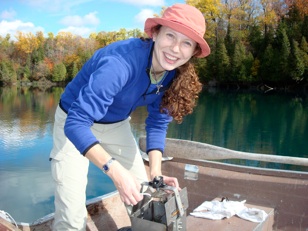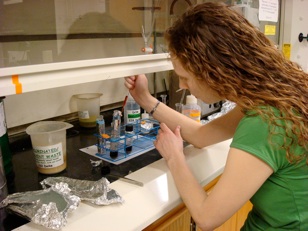
What is oceanic euxinia?
Euxinia refers to anoxic and sulfidic ocean conditions. The term “euxinia” derives from the Greek word for the Black Sea, the largest euxinic basin today. Oceanic euxinia accompanied significant events in Earth history, including several Phanerozoic biotic crises. These conditions also played a critical role in the early redox evolution of the ocean-atmosphere system, and may have been important in the evolution of early animal life (Meyer and Kump, 2008). The biogeochemical changes that accompany oxygen loss from the ocean are also relevant today, because the oceans lose oxygen as they warm.
Biogeochemistry of the end-Permian mass extinction
Abundant geologic, geochemical, and fossil data suggest that anoxic and sulfidic conditions widely prevailed across the Permian-Triassic boundary, the time of the largest mass extinction of the Phanerozoic. Many hypotheses have linked Siberian Trap volcanism to marine biogeochemical changes and end-Permian mass extinction, but quantitative interpretations of these proposed extinction mechanisms have been hindered by lack of appropriate numerical models. Using an Earth system model of intermediate complexity complete with marine biogeochemical cycling of C, N, and S, I investigated the impact of
The Early Triassic recovery from mass extinction

Euxinia was widespread during and after the end-Permian mass extinction and is commonly cited as an explanation for delayed biotic recovery during Early Triassic time. This anoxic, sulfidic episode has been ascribed to both low- and high-productivity states in the marine water column, leaving the causes of euxinia and the mechanisms underlying delayed recovery poorly understood. Here we use isotopic analysis to examine the changing chemical structure of the water column through the recovery interval and thereby better constrain
paleoproductivity. The δ13C of limestones from 5 stratigraphic sections in south China displays a negative gradient of approximately 4‰ from shallow-to-deep water facies within the Lower Triassic. This intense gradient declines within Spathian and lowermost Middle Triassic strata, coincident with accelerated biotic recovery and carbon cycle stabilization. Model simulations show that high nutrient levels and a vigorous biological pump are required to sustain such a large gradient in δ13C, indicating that Early Triassic ocean anoxia and delayed recovery of benthic animal ecosystems resulted from too much productivity rather than too little (Meyer et al., 2011).
Modern analogs for ancient euxinia
Another focus of my research involves the sedimentary signature left by unique microbial communities living in euxinic environments. This work aims to improve biomarker identification of ancient sulfidic intervals by characterizing microbial lipids in modern euxinic environments. Using meromictic Fayetteville Green Lake (New York) as a modern analog for end-Permian and Proterozoic environments, I analyzed bacterial pigments in surface sediments and water filtrate spanning the chemical transition from oxic to sulfidic conditions. My findings challenge the expected organism-lipid associations in this environment and critically examine the relationship between the physical/chemical environment and biological production of geologically meaningful compounds (Meyer et al., 2011).
Fieldwork in South China

volcanic degassing on the distribution of oxygen and hydrogen sulfide in the end-Permian ocean. I demonstrated that realistic increases in ocean nutrient status driven by weathering feedbacks from CO2 addition are capable of creating spatially heterogeneous euxinic conditions broadly consistent with geologic data (Meyer et al., 2008).
A comparison of our modeled distribution of H2S in the surface ocean and observed biomarker evidence for photic zone euxinia.
(a) The Early and Middle δ13C gradient across the GBG. Griesbachian to Smithian platform limestones are systematically enriched by 2–4‰ relative to coeval slope and basin strata. The δ13C gradient decreases in the Smithian, and in the Middle Triassic, platform and basinal δ13C values are nearly identical. (b and c) Box plots of diversity and fossil abundance observed on the GBG from the Late Permian into the Late Triassic. Data from (Payne et al., 2006). (d) Vertical bars show the temporal extent of anoxic or euxinic waters during the Late Permian and Early Triassic.


Left: Sampling sediments at Fayetteville Green Lake, NY. Right: Preparing total lipid extracts from FGL sediments for carotenoid analysis via APCI-LC-MS.
